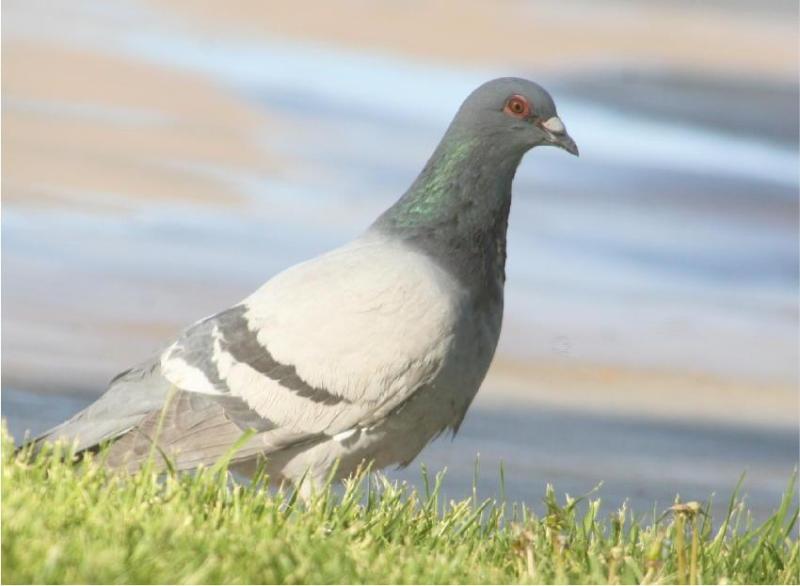Rock Pigeons and Adaptability
By Dave Hanks
Rock Pigeons, also known as Rock Doves, are native to southern Europe where they nest in rocky cliffs. They were introduced to the United States, and as a result, were forced to adapt to new habitats. Lack of maximum prime habitat has limited their choices. We see so many in cities, around farm buildings, or under highway overpasses that it’s easy to think that they are where they want to be. Not so, they have made a major adjustment. Tall buildings are evidently the closest match to cliff sides that many can find. What is also interesting is that Peregrine Falcons (also forced to nest on tall buildings) have adapted in the same manner, but make the most of it by preying upon the pigeons.
Pigeons are a very diverse species. There are 12 sub-species, which includes Homing Pigeons. Many escaped domestic birds have added to this diversity and some individuals are totally white. Pigeons fly with their wings in a V configuration, which aids in their identification at a distance.
This species feeds in flocks on the ground. They also drink continually without tilting their head back. Tilting is characteristic of most birds. Pigeons are monogamous and will breed at any time of the year. Two young, called squabs, are produced at each nesting. The squabs feed by placing their beak into the parent’s throat. The food is drunk. It is called “pigeon milk.” It is a predigested, heavy, milky liquid.
We used to have a pigeon problem before we removed the top half of an old barn. Some high school students liked to bring their prom dates to the barn for an “after dance” dinner. To do that, required a major clean-up of pigeon feces before the old barn was presentable.
(Showing off iridescent colors)
|
